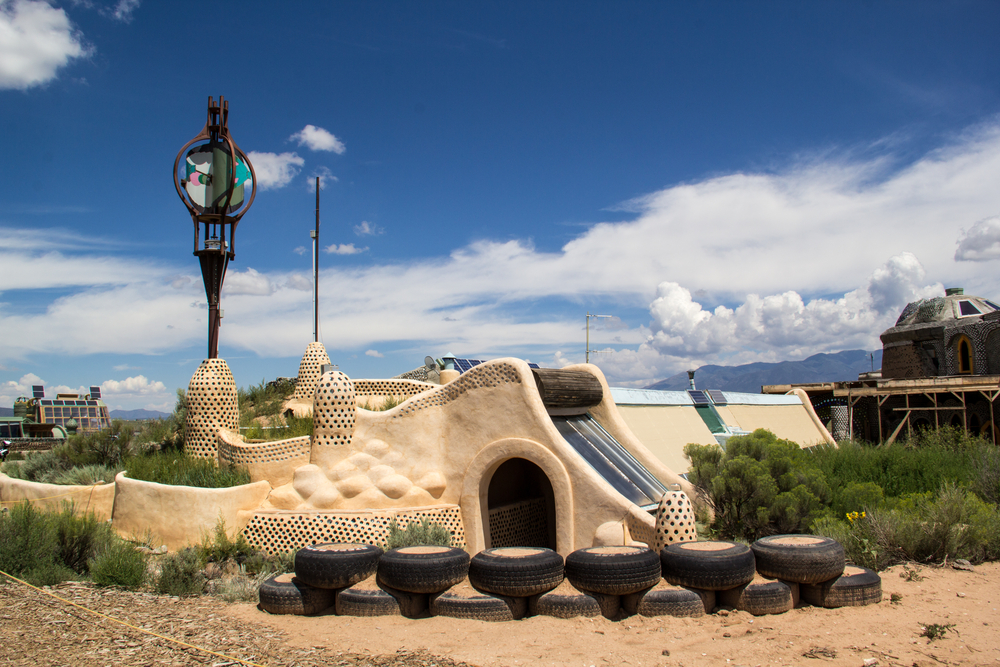One of the key elements of social entrepreneurship is sustainability. From the food that is grown to the way we live, those who can harness the positive influence of sustainable practices and reach the mainstream with their ideas are set to both profit and influence culture.
One idea that is pre-mainstream, but gaining traction by early adopters, is the off-grid housing option called the Earthship. Still far from sweeping the nation, communities are popping up in limited areas where they are testing best practices, perfecting construction and design, and learning what community living means in a world of autonomy – all without using a single city municipality.
From Pennsylvania to New Mexico, and in various countries throughout the world, Earthships are built using only recycled materials – tires, glass bottles, reclaimed wood – and materials that are indigenous to the local area. They have thermal or solar heating and cooling, use only solar or wind energy, harvest water and produce food. According to Earthship Biotecture, “The Earthship is the epitome of sustainable design and construction. [They] can be built in any part of the world, in any climate and still provide electricity, potable water, contained sewage treatment and sustainable food production.”
When I first heard the term “Earthship” it conjured up the image of a hobbit home covered in dirt, moss and trees with just a tiny door for entry. While I am not necessarily opposed to that, seeing real Earthships made me realize how much potential there is in creating efficient, beautiful living solutions that don’t suck the Earth dry of her resources.
Utilities are a major energy consumer. The power sector generates 40 percent of all carbon dioxide emissions and a huge amount of energy is created from non-renewable resources like petroleum and coal. As the world wakes up to the repercussions of these practices, renewable energy starts to look like a sweeter deal. Economists currently predict that renewable energy will beat out oil in the long-term because of energy security and environmental issues and because it is a lot cheaper to create. Honing these better practices when it comes to heating, cooling and operating the home is what Earthship projects are all about.
Here is why I think that the Earthship movement might just take off: millennials are buying in.
Earthship developments around the U.S. are inviting young people – those just out of high school, or just out of college – to come and intern with them. They are running classes and conferences for people interested in learning principles and design, and the classrooms and internships are filling up. Young people want to make a difference and changing the way a home uses energy, creating a space that either takes or gives back to the Earth, is one way to make this difference.
Maybe this housing alternative won’t take off to the extent of suburbia or the Craftsmen home, but I wouldn’t be surprised if it became a viable consideration for people. Am I too optimistic about the Earthship option? Talk back to @StarterNoise using #EarthshipConvo



